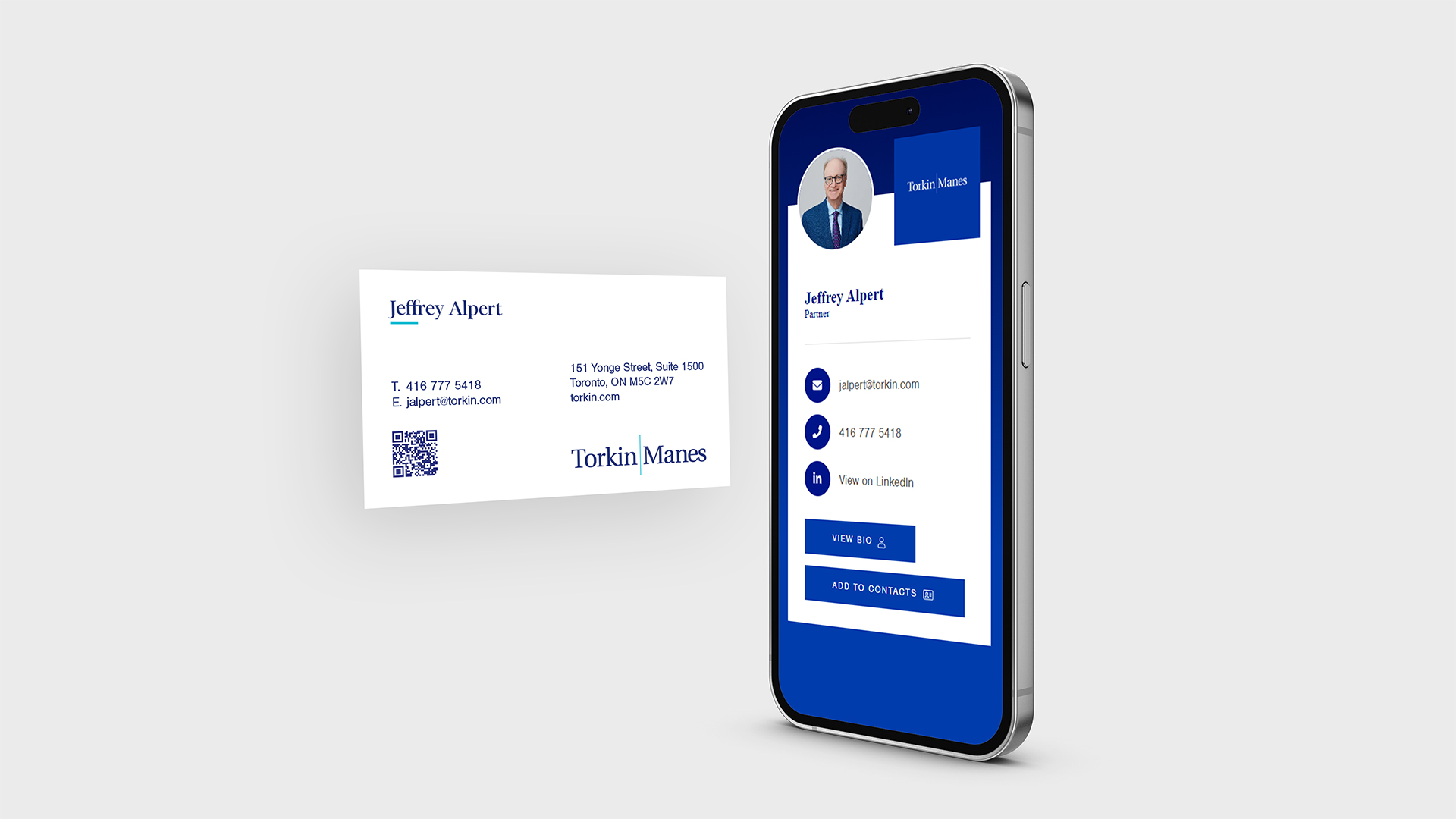The Future of Networking: Digital or Printed Business Cards?
Blog Post
The debate over digital or physical business cards rages in the modern networking age. As technology reshapes how we connect and communicate, the choice between digital or printed business cards becomes increasingly relevant. To make an informed choice, it’s crucial to understand the pros and cons of each option. However, the choice will ultimately depend on an individual or firm’s personal preferences and specific networking situations.
Before we dive into the question of “digital or printed business cards,” we wanted to provide some context into the ways business cards are used in modern networking.
What is the purpose of a business card?
The fundamental purpose of a business card is to provide a convenient way to share contact information and facilitate future communication. An effective business card design also conveys your personal or corporate brand identity and reinforces your professional credibility, making a memorable first impression.
72% of people judge a company or person by the quality of their business cards. 39% of people would not do business with someone with a “cheap looking” business card.
According to a survey conducted by Statistic Brain.
It’s nearly impossible to effectively network without exchanging contact information. Business cards have been a cornerstone of professional networking for decades. Printed business cards still hold value, but digital business cards offer a flexible, contemporary alternative.
Has networking and the use of business cards changed?
The reason we network—to build relationships and expand our professional connections—remains unaltered. However, the entrenchment of digital communication tools, social media platforms, and virtual meetings has fundamentally transformed the networking landscape. The use of business cards must also evolve. Digital alternatives are gaining traction alongside their physical counterparts and are becoming increasingly essential in a digital world.
Digital Business Card vs. Printed Business Card
Digital Business Cards
One of the most significant advantages of a digital business card is the ability to create interactive content. Digital cards can include clickable links to website pages, social media profiles, portfolios, and case studies, whereas a printed card generally only has room for limited contact information. They are also a more sustainable and practical option, as contact details or other information changes can be made to the digital version without reprinting physical cards.
However, when it comes to using digital business cards, accessibility could be an issue. Sharing and accessing digital cards requires internet access, and some versions require compatible devices. Not everyone you encounter will have experience receiving digital cards yet and may not know how to save your contact information, but this is rapidly changing as digital cards gain popularity.
77% of individuals and 63% of small business owners haven’t used a digital business card app.
According to a study by Misaias.
Some argue that digital cards lack the personal touch of a physical or printed business card. However, this is a non-issue if you’re making connections in the digital realm where you can’t hand someone a physical card anyway. In addition, digital cards can still be customized to include personal and company branding to make a memorable impression.
Pros:
- Convenient: Easily shared via email, text, or social media.
- Updatable: Can be easily updated with new information without reprinting.
- Interactive: Can include clickable links to websites, social profiles, and portfolios.
- Environmentally Friendly: Reduces paper waste.
Cons:
- Accessibility: Internet access is required.
- Impersonal: Lacks the tangible, tactile, personal touch of a physical card.
- Dependence on Technology: Technical issues or compatibility problems can affect access.
Printed Business Cards
When introducing yourself to someone new, there is no easier way to exchange contact information than having a business card ready to go. A printed business card, though, is more than just a piece of paper with your name, email, and phone number on it. It’s an opportunity to brand yourself in the best possible light. A high-quality design, combined with the right materials and finishes, can create a positive impression and showcase professionalism to your clients and industry contacts.
Even in the digital age, many people still prefer to receive printed cards over digital options – printed cards do not require any technology to be shared, making them universally accessible. However, printed business cards are static by nature and cannot be updated without reprinting.
If you do happen to come across someone with a preference for a digital card, physical cards can be designed to include a printed QR code or embedded NFC chip which will allow you to share a digital version of the card as well, leaving you prepared no matter their preference.
Pros:
- Tangible Presence: Leaves a lasting physical impression.
- Universal Acceptance: No technology is needed to receive or share.
- Brand Impact: High-quality design and materials can enhance perceived professionalism.
Cons:
- Static Information: Cannot be updated without reprinting.
- Environmental Impact: The use of paper and ink has ecological consequences.
What We Recommend
Choosing the right option for your business ultimately hinges on your networking requirements. Physical business cards offer a tangible, personal touch that digital cards lack. They are invaluable to those who frequent in-person events and wish to make a powerful, tactile impression. However, both options have their pros and cons.
Increasingly, a strategy leveraging both digital and printed business cards can provide the best of both worlds and ensure you are prepared for all networking scenarios. In this time of transition, having a traditional, printed business card that includes a QR code which houses a digital business card will ensure you can transfer your pertinent contact information to any professional connection in the real or digital world. A hybrid approach allows a business to be flexible and versatile to accommodate the preferences of all new contacts and potential clients.
Interested in taking a physical and digital business card approach? Contact Cubicle Fugitive for more information.
Example of Print + Digital Business Card Design

Sources
Statistic Brain: https://www.statisticbrain.com/business-card-statistics/
Misaias: https://www.misaias.com/digital-business-cards-statistics/
